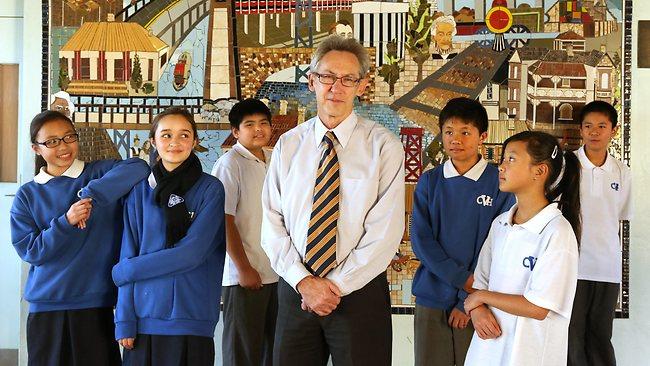Code of excellence breaks barriers
CANLEY Vale High School's staff don't dwell on the "highly disadvantaged" status of their students.

CANLEY Vale High School's staff don't dwell on the "highly disadvantaged" status of their students because it hasn't stopped them achieving consistently high results, the first step in a life of learning that will help them break the shackles of demography.
The school, in Sydney's west, is the highest performing of any Australian school ranked in the bottom quarter of socio-economic disadvantage, according to analysis conducted by the Grattan Institute for The Australian.
Principal Pat Mahony has witnessed the student population almost double in the decade he has been in charge, drawn by the successful mix of "old-fashioned" teaching and modern approaches.
"We prize teaching time. The focus is very much on teaching and learning and minimising interruptions that take students out of class," he said. "It's very rare that you will walk around our school and find students outside of a classroom. We do normal things like sport, but we realise class time is crucial and that's our focus."
It's a theme shared by many high-performing schools, according to Melbourne Education Research Institute director John Hattie, from the Melbourne Graduate School of Education at the University of Melbourne.
"There are many permutations of success . . . having high expectations for all students, seeing the effects of teaching through the eyes of the students, the collective impact of all adults in the schools to focus on the experience and outcomes of learning and making school an inviting place to come to learn," he said.
Professor Hattie said it was important students knew learning was a challenge and that teachers were aware of their crucial roles.
Mr Mahony said data was a school's best friend, if its limitations were acknowledged.
"NAPLAN (National Assessment Program -- Literacy And Numeracy) tests are particularly useful." The school's results for both Years 7 and 9 yield above-average results in almost every area, particularly for Year 9 spelling and numeracy, which are substantially above national averages.
"Much of the credit for our success also falls on the head teachers who we rely on to set targets for their faculties, set the example and to drive quality teaching," Mr Mahony said.
There are innovative programs, too. An afternoon homework centre operates two days a week; a double literacy period for Years 7 and 8 is held each week and attendance is at 96 per cent because the school follows up any unexplained absence with parents.
"High expectations are a cycle. The senior executive have high expectations of the teachers, who in turn have high expectations of the students, who in turn put the pressure back on the teachers to deliver," Mr Mahony said.
